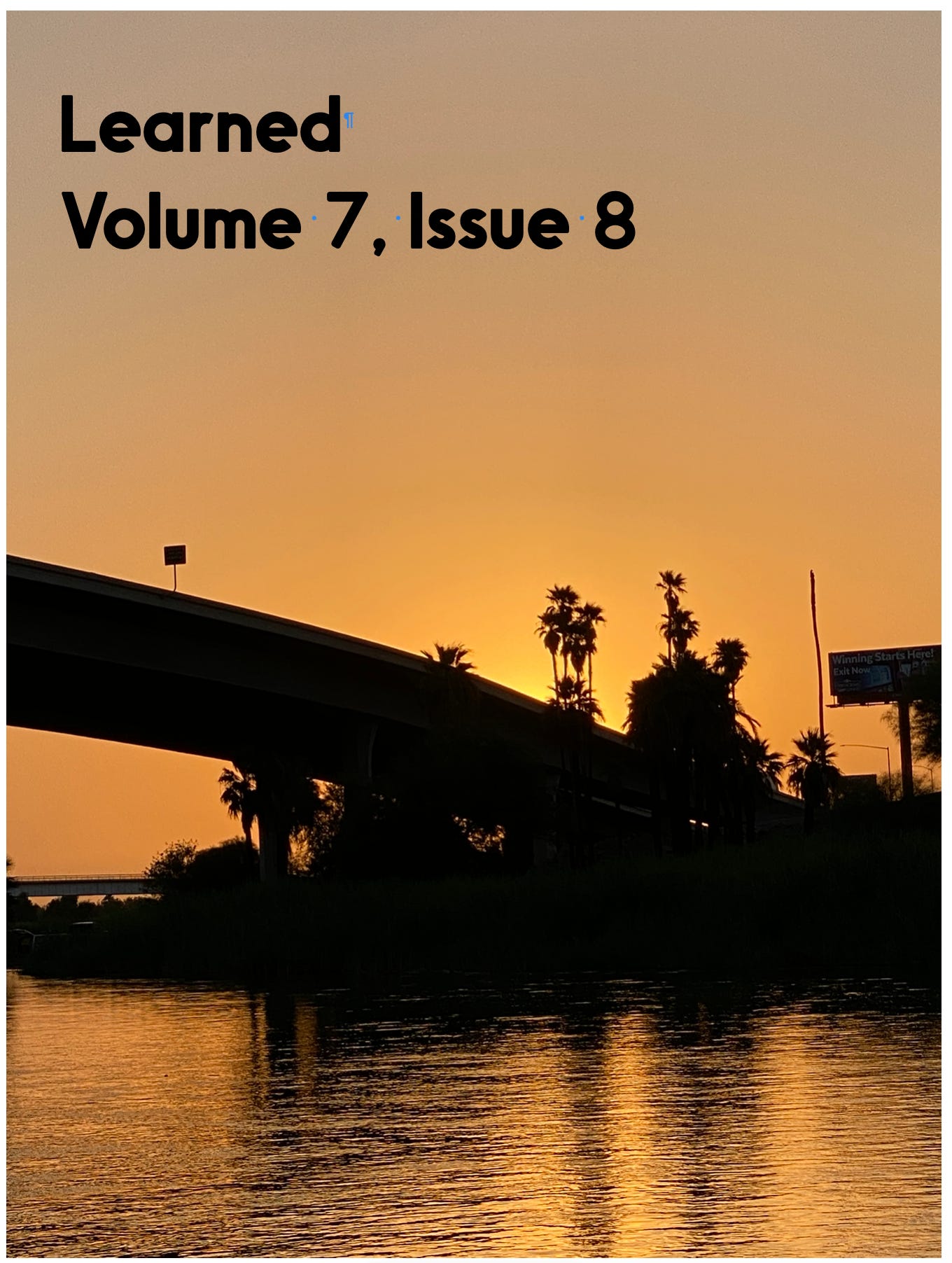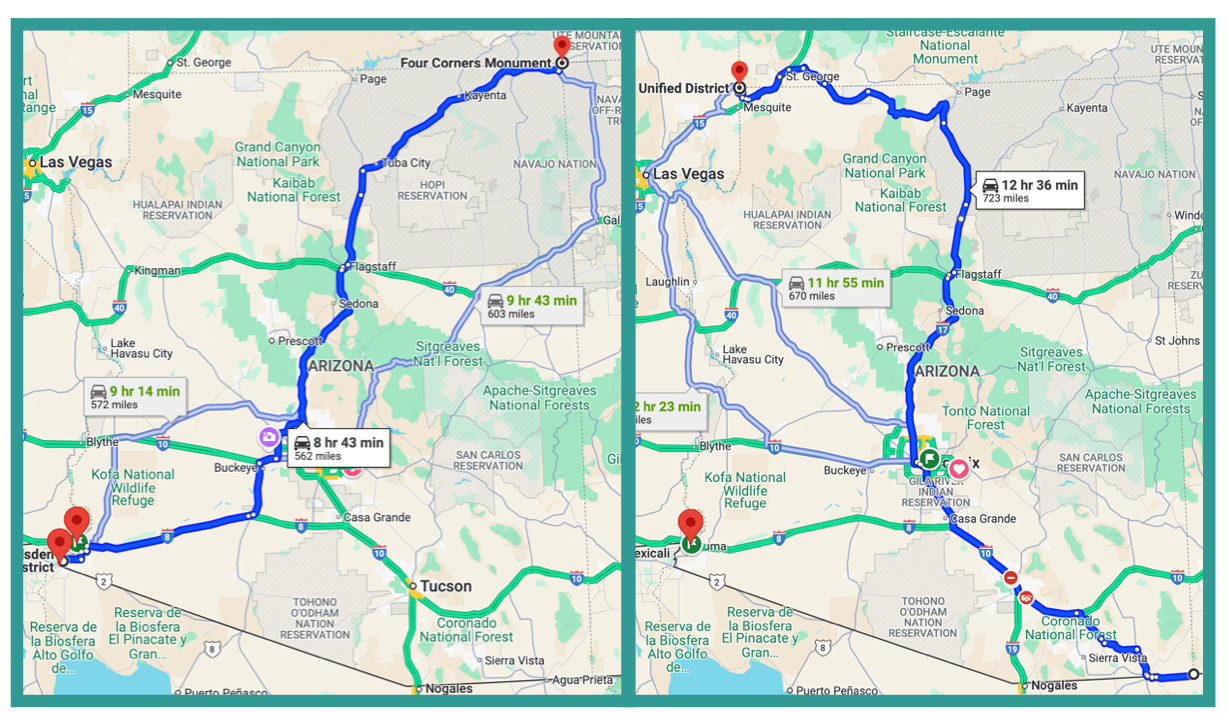Little Spring / Good Oak
Learned Vol. 7, Issue 8
Picture this: it’s 1984, I’ve just started fourth grade at a new school, and my teacher has just handed out our Arizona history textbooks. The textbook is a beauty. It’s a hardcover with a stunning cover and an interior stuffed full of black and white photos of cowboys and Indians and old-timey buildings and everything. It is also wrong. About damn near everything.
40 years on, Arizona is a vastly different place than the sleepy, overlooked state I grew up in. At just over 3 million people, Arizona in 1984 is farms and mining and not much else. Since then, the population has more than doubled to 7.4 million people, farming is on the way out (water rights issues) and mining is being minimized to make way for a whole host of industries that want to take advantage of the weather and the open space.
Along with these changes has come a much better understanding of Arizona’s history and its place as both an industrial anchor and tourist getaway for the entire Southwestern corner of the U.S. We know, for example, a lot more about the actual day-to-day lifestyle of the peoples who populated the region before successive waves of European colonists transformed it. We have been able to sort a lot of the fact from the romanticized fiction of episodes like the gunfight at the O.K. Corral and, well, everything about Billy the Kid’s time in AZ. And we know, finally and almost definitively that the name does not come from the Spanish phrase "arida zona"1 and thank all the Gods for that. Take that 1984 textbook.
But of course, that begs the question, where does the word Arizona come from? The Visit Arizona website, a state-owned page, says, “The word Arizona derives from the Aztec Indian word "arizuma," which means "silver-bearing."2“ But not everyone agrees. In fact, Arizona's etymology is still widely debated, with most factions landing in one of two camps: the little spring or the good oak.
The little spring theory is suggests that Arizona comes originally from an Oʼodham word meaning “place that has a little spring,” which was then interpreted and borrowed into colonial Spanish as Arizonac3.
The other, and somewhat more intriguing, in my opinion, theory is that Arizona stems from a Basque phrase meaning "the good oak tree" and was coined by one of the many Basque ranchers that arrived in the area in the 18th century.
The irony behind both names is that they originally described small regions in what is now a massive area. "Little Spring" originally named an area in the region of Sonora, now a part of Pinal county on the Eastern side of the greater Phoenix Metropolitan area. Even then, there is more than one Sonora so that may be wrong. Likewise, The Good Oak4 may also have described an area of Sonora5.
How’s that ironic? Well, the Sonora described in both these etymologies is but a fraction of the area modern Arizona encompasses. Like, really, Arizona is big in a way that’s hard to describe to people who have never driven across it. More importantly, it’s home to a vast number of different terrains and climates. I mean, if nothing else, it’s the only place in the U.S. to host parts of all four North American deserts, each of which is visually distinct from the others6.
Celebrating this, and also partially the prompt behind this post, is the new branding recently unveiled by the Arizona Office of Tourism. They’ve left behind the reds and browns of the 70s for a more refined, softer palette centered around turquoise and copper. It’s a pretty radical rebrand and one that I think works really well to help re-define Arizona as a concept for the modern world. Now if we could just agree on an etymology we’d be all set.
Finally, and just ‘cuz, here's a quick visual aid to illustrate just how big the place is: Here's a route from the most Southwestern point of Arizona to the more Northeastern point. 8 hours and 43 minutes by car, 562 miles. Here's the opposite: SE to NW: 12 hr 36 minutes by car, 723 miles. Although, to be fair this is a little misleading because no matter which way you drive, you've got to go around the Grand Canyon meaning part of your route is through either Nevada or Utah. Good luck.
It means “arid zone” and makes the whole place sound like a deodorant.
My understanding is that this is somewhat discredited as the Nahuatl languages were generally spoken much further south than the Piman (O'odham) languages which were more commonly spoken in the Sonoran region.
I immediately petition to have every instance of “Arizonan” replaced with the word “Arizonac” for all time.
And, by the way, when I open up my desert-themed coffee and bookstore, that's the name I'm using.
I've never really thought of oaks as desert trees, but well, it turns out there are several, including the Emory, Silverleaf, Shrub Live, and Arizona White Oak.
Here’s some excellent further reading from the Secretary of State.





Basque! Of all languages, that's one I didn't expect popping up in Arizona.
And, my god, that kind of trip is what counts as crossing the entire country, here in France. Hard to picture that as one "region" only.